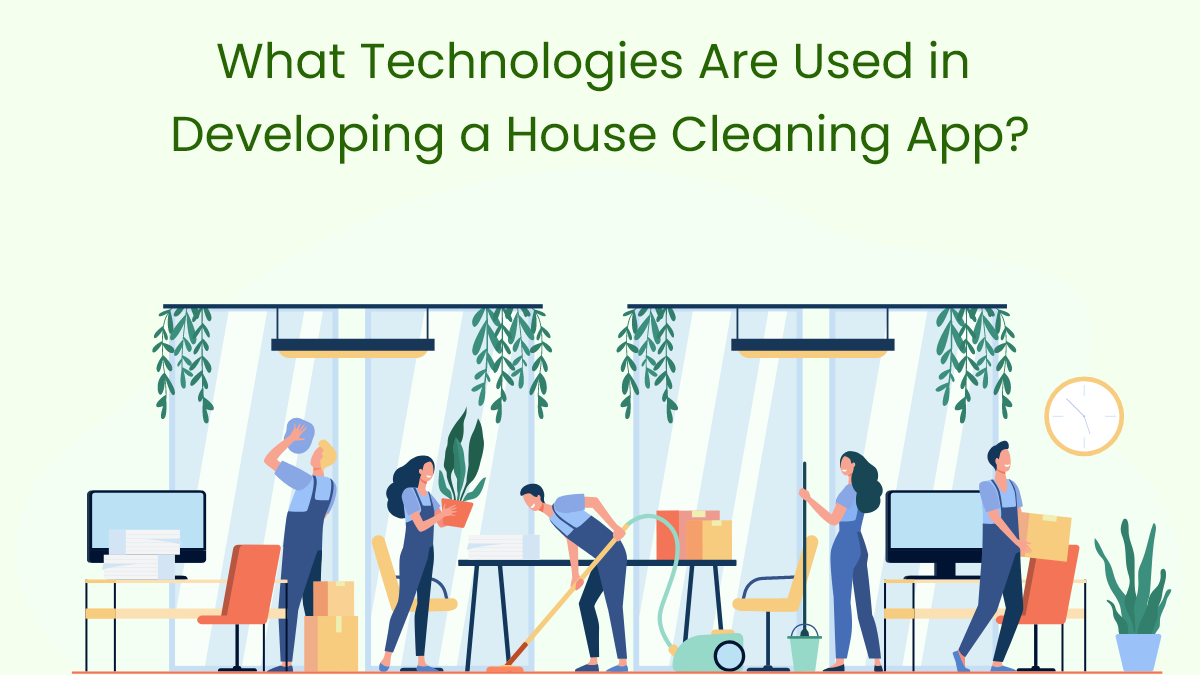What Technologies Are Used in Developing a House Cleaning App?

Building a house cleaning app requires the integration of various technologies to create a seamless and user-friendly experience for both customers and service providers. From backend infrastructure to frontend interfaces, several key technologies play a crucial role in the development process. Here's a breakdown of the technologies commonly used in developing a house cleaning app:
1. Mobile Application Development Frameworks
Mobile application development frameworks provide the foundation for building the frontend interface of the house cleaning app. Frameworks such as React Native, Flutter, or Ionic enable developers to create cross-platform apps that run smoothly on both iOS and Android devices. These frameworks offer a wide range of pre-built components, libraries, and tools to streamline the development process and ensure consistency across platforms.
2. Backend Development Technologies
The backend infrastructure of a house cleaning app powers its core functionality, including user authentication, booking management, payment processing, and communication between users and service providers. Backend development technologies such as Node.js, Django, or Ruby on Rails are commonly used to build the server-side logic and APIs that connect the frontend interface with the database and other external services.
3. Cloud Computing Services
Cloud computing services play a crucial role in hosting and scaling the backend infrastructure of a house cleaning app. Platforms such as Amazon Web Services (AWS), Google Cloud Platform (GCP), or Microsoft Azure offer a wide range of services, including server hosting, database management, content delivery, and machine learning. Leveraging cloud computing services allows developers to deploy, scale, and manage their app infrastructure with ease while ensuring high availability and reliability.
4. Location-Based Services (LBS)
Location-based services enable the house cleaning app to identify the user's location, locate nearby cleaners, and provide real-time tracking of service providers. Technologies such as GPS, geolocation APIs, and mapping services (e.g., Google Maps, Mapbox) are used to integrate location-based features into the app. LBS also enable users to search for cleaners based on their proximity, view cleaner availability in their area, and track the arrival of their assigned cleaner.
5. Push Notifications
Push notifications are essential for keeping users informed and engaged throughout their interaction with the house cleaning app. Technologies such as Apple Push Notification Service (APNs) for iOS and Firebase Cloud Messaging (FCM) for Android enable developers to send real-time notifications to users' devices. Push notifications can be used to provide updates on booking status, appointment reminders, promotional offers, or other relevant information.
6. Payment Gateways and Digital Wallets
Payment gateways and digital wallets facilitate secure and convenient payment processing within the house cleaning app. Integrating payment gateway APIs such as Stripe, PayPal, or Braintree enables users to make payments using credit/debit cards, digital wallets, or other payment methods. Digital wallets such as Apple Pay, Google Pay, or Samsung Pay provide additional convenience by allowing users to store their payment information securely and make transactions with a single tap.
7. Communication and Messaging
Effective communication between users and service providers is essential for coordinating cleaning services and addressing any questions or concerns. Technologies such as WebSocket, Socket.IO, or Firebase Realtime Database enable real-time communication and messaging features within the app. In-app messaging allows users to chat directly with their assigned cleaner, discuss specific requirements, or provide feedback on the cleaning service.
8. Data Analytics and Insights
Data analytics and insights play a crucial role in optimizing the performance and user experience of the house cleaning app. Technologies such as Google Analytics, Mixpanel, or Firebase Analytics provide tools for tracking user behavior, monitoring app performance, and gaining insights into user preferences and trends. Data analytics enable developers to identify areas for improvement, make data-driven decisions, and personalize the app experience based on user feedback.
Conclusion
In conclusion, developing a house cleaning app requires leveraging a wide range of technologies to create a robust, scalable, and user-friendly platform. From mobile application development frameworks and backend infrastructure to location-based services, push notifications, payment gateways, and data analytics, integrating these technologies enables developers to build a feature-rich app that meets the needs of modern consumers and service providers alike.
- Art
- Causes
- Crafts
- Dance
- Drinks
- Film
- Fitness
- Food
- Games
- Gardening
- Health
- Home
- Literature
- Music
- Networking
- Other
- Party
- Religion
- Shopping
- Sports
- Theater
- Wellness
- IT, Cloud, Software and Technology


